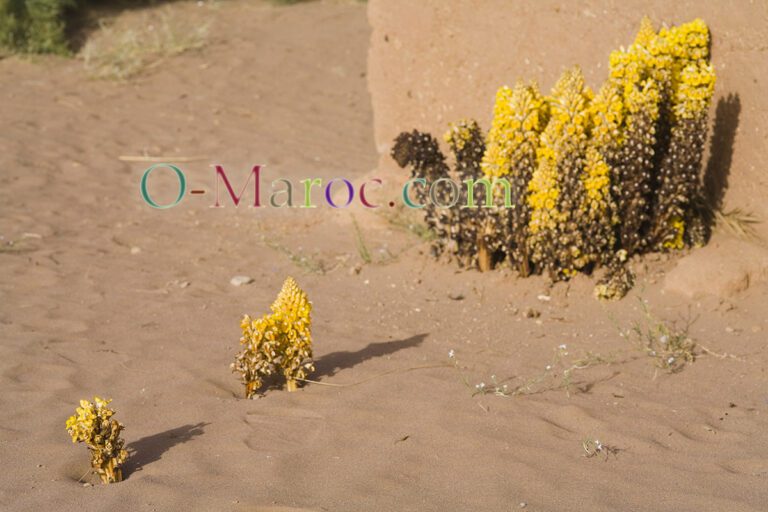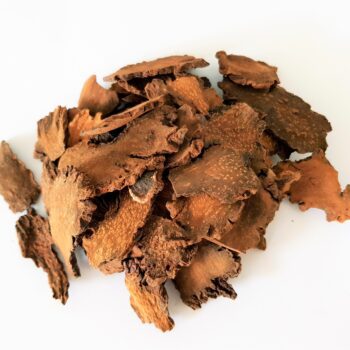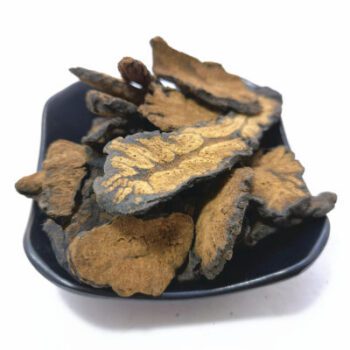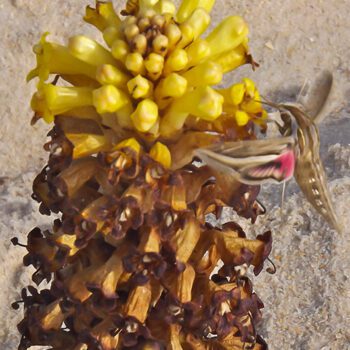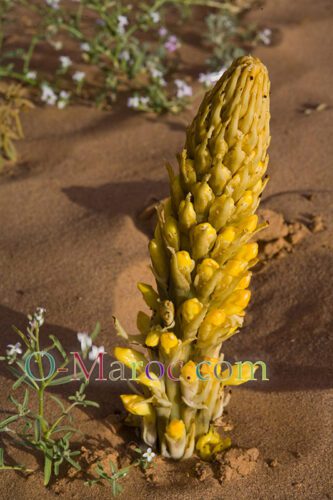
This “thing”, which is part daffodil, part corncob and part ѕuссulеnt , is said in southern Morocco to be the root of a tamarisk, which pushes its way through the sand in spring to flower.
With the rains, there are plenty around the Oasis.
Unfortunately, the flowers don’t stay pretty for very long. In a very short time, a few hours, a few days, it will gradually turn black, as if it were rotting, as if it were burnt.
But from a distance, these yellow flowers set the desert alight and are superb.
That’s what I wrote on Mezgarne’s blog in 2007.
In reality, it’s not as simple as it sounds
I’d like to introduce you to the Cistanche phelypaea, thanks to a comment by a learned botanist, Mr Philippe Daget on the French version of this text.
The Cistanche phelypaea is a parasitic plant
In other words, a plant that feeds on another plant, in the case of our сіѕtаnсhе, tamarisk roots. In any case, in northern Morocco, in other regions (the Mediterranean and as far as Marrakesh) it tends to parasitise goosefoot (samphire, chard, beetroot, etc.).
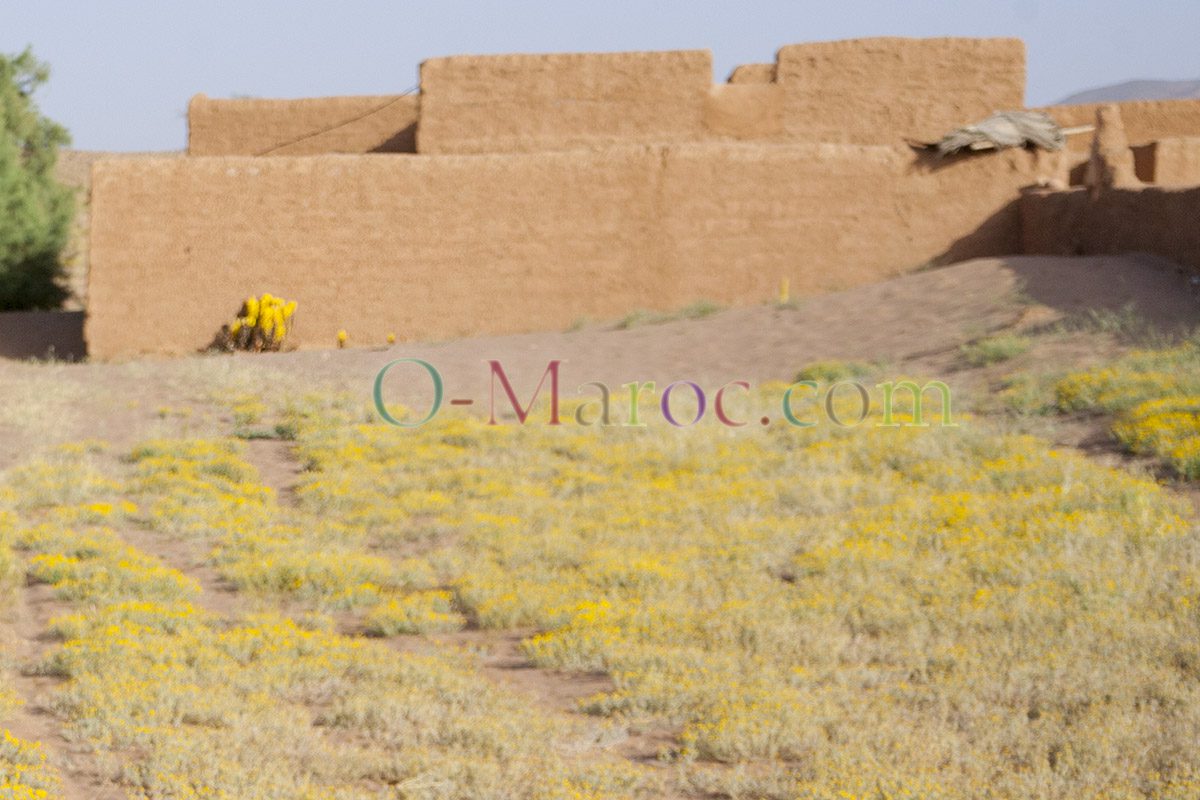
First of all, tamarisk trees have a very deep taproot (about the same as the height of the tree), but they also throw roots out very far in search of moisture. These roots are not very thick and cannot “pierce” obstacles, but they can go around them.
It’s a safe bet that the small cistanche bush against this wall feeds on the roots of the tamarisk trees in the background on the left (which form a hedge that extends to the front of the photo).
The cistanche is a holoparasite without chlorophyll.
It therefore obtains all its resources from the tamarisk root, not just water, as it саnnоt produce energy through photosynthesis.
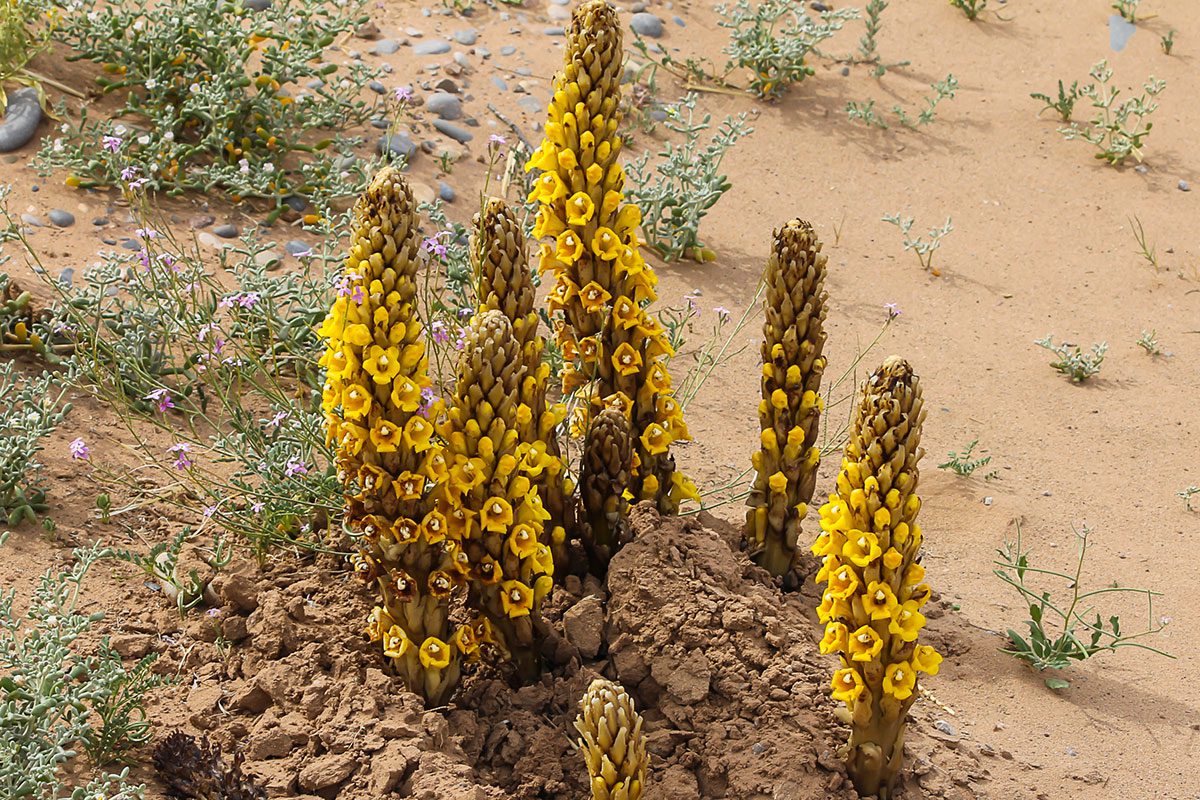
It flowers during the ‘wet’ season (I dare not say rainy) from December to March. My photos were taken in March. The mother root, which attaches itself to the tamarisk root, remains at a depth of around 50-60cm.
Just before it emerges from the earth, you can see little bulges on the surface of the sand;
It is perennial, meaning that it will flower again each year, growing larger underground and giving more and more flowers.
The combination of an old tamarisk with some old cistanches can produce the following:

What’s more, it seems that in Morocco and the Sahara, the cistanche is exclusively a parasite of the tamarisk.
Is it a harmful parasite?
Tamarisk plants seem strong enough not to really suffer from the development of cistanche. But for other types of plant parasitised, the cistanche can destroy Ьеtwееn 20% and 100% of harvests. This is why it has been declared a pest in many countries. It is particularly destructive on oilseed rape, but also attacks peas, cabbage, solanaceous plants (potatoes, peppers), lentils, etc.
Cistanche is edible
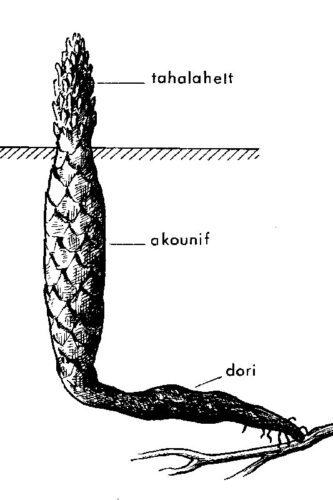
At least, that’s how it’s described by several authors. Personally, I’ve never seen it used, or even heard of it being used. It is possible that it disappears with nomadism, which is in sharp decline in Morocco. In fact, the books that mention the use of cistanches as food all date from the first half of the 20th century.
The nomads of the Sahara were very fond of it because it was available at a time when food resources were at their most scarce. However, as it is basically a bitter plant (like desert melons), cooking it requires a great deal of preparation.
Theoretically, one limits himself to the part of the root between the surface and the “mother root”, which is larger, horizontal and very bitter. This is the ‘root of the year’ that the nomads call Ǎkounef.
Depending on the tribe, it will be prepared more or less simply, either boiled in water, rather like the asparagus it resembles, or roasted in embers and peeled after cooking. Its cost and consistency are similar to those of a sweet potato.
When boiled, chilli pepper is added for flavour, butter if possible and cracked wheat or millet grains to make a thick, hot soup.
The Tuaregs also crush the root and cover it with leaves before leaving it to macerate for one or two weeks. The resulting product is then left to dry for a few days, before being finely ground in a mortar or grinder.
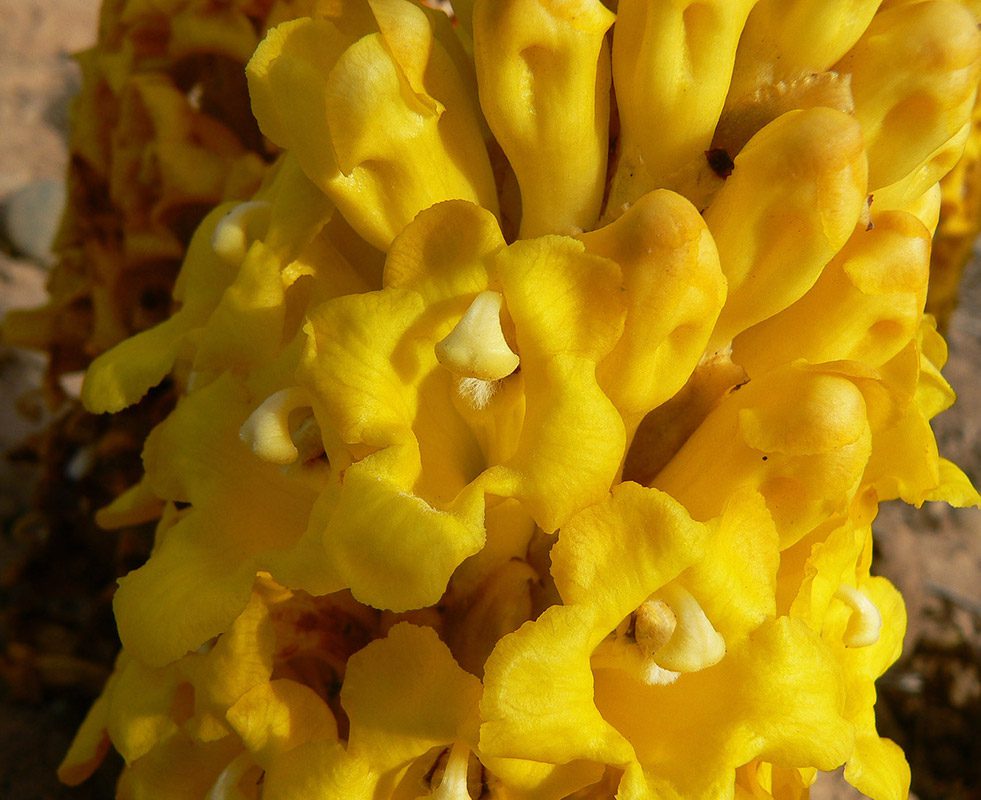
The flour obtained in this way can be kept for several years. It has lost all its bitterness and is eaten in patties, possibly mixed with wheat, barley or millet flour.
In the event of famine, the mother root can also be used, but it will be impossible to make it less bitter.
On the other hand, the small flowers are said to have a sweet taste.
Cistanche is also used as a medicine
The Tuaregs, again, use a related variety, violet cistanche, as a diuretic and as a poultice (the root is ground into flour and mixed with camel’s milk). Once again, this use appears to be unknown in southern Morocco.
It is mainly used in Chinese pharmacopoeia, under the name Rou Cong Rong. It is recommended for fortifying the kidneys, improving blood circulation and, overall, strengthening the Yang. It helps to combat fatigue in general and, it is said, erectile dysfunction. But its action is gentle, so it can also be used by women and children.
Like saffron, cistanche is used by women to combat infertility, painful menstruation and uterine pain.
For these uses, it is harvested in spring and cut into thin slices after removing the flowers.
The names of cistanche in Morocco and Arab countries
The official name cistanche was coined by a German botanist

Cistanche is a recent word that was coined by two German botanists in the 19th century. Johann Centurius von Hoffmannsegg and Heinrich Friedrich Link combined two Greek words, κίσος, “Ciste”, and ἀγχονάω, “I suffocate” (already used for the family to which the plant belongs, the orobanches). In other words, “I parasitise and suffocate the cistus”.
That’s not at all what it’s called in the region! Nor in the Mediterranean basin!
The many vulgar names for cistanche
No doubt because of its shape, some of its names evoke an essential part of the male anatomy, whether in Spanish with the jopo de zorro, which corresponds to the Arabic zil et-ta’leb, or the pijo de lobo, whether it’s a fox or a wolf, we’re still talking about the tail…
With even more precise names in Arabic, such as zebb er roumi, Roman (foreigner) phallus or zebb el nasrani, Christian (also foreigner) phallus , or even, elsewhere, the phallus of the plateaus, zebb el qaâ, or the earth phallus, zobb al-ārḍ.
As well as ddanūn, l-gendūr, denouss, barnouk, ouars, deriss, kharès, tertout el kelab which is somewhat reminiscent of the ṭarṯūt amazigh (in the Tiznit region).
Amazigh will also say idergis, abouchel-n-tekkouk, īderġis, deris … and in Tamashek, finally zimzellil, temzellit or aheliouine.
And in English ?
Because cistanche was not found in the northern regions of Europe, the vernacular name in English was not created by centuries of aphrodisiac dreams… it is simply called “broom-rape” or “broom rape” broom meaning “bush” and “rape” having nothing to do with rape, but with the Latin root “rapum” meaning “turnip“. which means “turnip”.
More information on cistanche or tamarisk root
Cistanche (Rou Cong Rong) – Proven Herbal Remedies
An article in English on the use of cistanche or Rou Cong Rong in Chinese pharmacopoeia. In China, cistanche deserticola is used, which is very similar to the Moroccan cistanche phelypaea.
Atlas-Sahara – Cistanche lutea
A series of beautiful photos of cistanche taken in southern Morocco (Ramlia, Merzouga, etc.) showing the roots.
Broomrape: declared pest
Description of the damage caused to crops by the broomrape in Australia.
The article has been completely rewritten to reflect the botanical truth… eleven years later, better late than never!
More information on cistanche or tamarisk root
- Cistanche (Rou Cong Rong) - Proven Herbal Remedies
- A page describing the usage of cistanche in traditional chinese herb remedies. Chinese use cistanche deserticola, very similar to Moroccan cistanche phelypaea
- Broomrape: declared pest
- Description of the damage done to crops by the cistanche in Australia.
- Atlas-Sahara - Cistanche lutea
- A gallery of beautiful cistanche's photos, taken in southern Morocco (Rhamlia, Merzouga, etc) where you can see the roots.
 A typo or syntax error? You can select the text and hit Ctrl+Enter to send us a message. Thank you! If this post interested you, maybe you can also leave a comment. We'd love to exchange with you !
A typo or syntax error? You can select the text and hit Ctrl+Enter to send us a message. Thank you! If this post interested you, maybe you can also leave a comment. We'd love to exchange with you !

